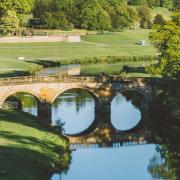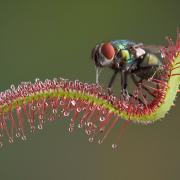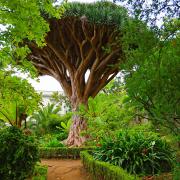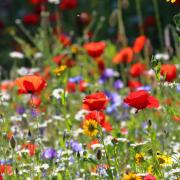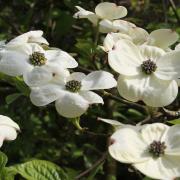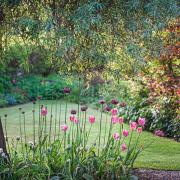Griselda Kerr gives advice on gardening tasks to carry out this month
‘From heavy hartes all doleful dumpes the garden chaseth quite’ – a quote from Tottel’s Miscellany, a poetry anthology of the 16th century – seems the most charming way to consider the garden as spring leaps into focus. What better way could there be to cast off the doleful dumpes of a wet winter than to open the doors of the garden on a bright April day?
The options of what to do are many but there is something particularly satisfying about a successful day of pruning. You know it will give your garden its best performance: correctly done it encourages more flowers, more fruit, better leaves, more vibrant colour, it keeps the shrub in peak condition and stops it taking over the space of its neighbours. On the whole, and especially Clematis, it is better not to hard prune shrubs for their first three years.
The maxim, ‘prune by Cheltenham’ and ‘clip on Derby Day’ is only helpful to those who follow the horse racing calendar. March 16th and June 4th respectively recall when, as a rule of thumb, winter pruning should be completed and when it is safe to start clipping box – but there are such wide margins in gardening we need not fuss too much within the season. By now the hardy shrubs that will flower again in autumn/winter should have been pruned (Buddleja davidii, Hydrangea paniculata and the like) for their new growth will be galloping along.
The slightly more tender shrubs can now be pruned. The lace cap, mop head, aspera and serrata Hydrangeas whose flower heads were left on for protection can be cut back to a strong pair of buds; Cerotastigma can be cut down and Indigofera back to a framework, the shrubby Potentilla can be tidied up as can Abutilons. There are many perennials and some shrubs, grey and silver leaved amongst them, that are best cut back now as new shoots start to show: Penstemon is a classic example but also Erigeron, Artemisia ‘Powis Castle’, Anthemis, Nepeta, Perovskia, Caryopteris, Helichrysum (the Curry Plant), Brachyglottis (it was called Senecio), Rosemary (have to start when it is young), Teucrium, Phygelius, Eupatorium and Ballota, the Californian Poppy Romneya coulteri, Lavatera, herbaceous clematis, Bupleurum, Salvias and Phlomis. This will take you through the last of the herbaceous plants you left standing over winter.
Always be on the look out to prune after flowering. The deciduous shrubs that flower in spring such as Winter Jasmine, Forthysia, Kerria, Chaenomeles and Spirea japonica should be cut back. Keep them in good shape by taking some from the base and shortening the remaining flowered stems (or laterals) as soon as flowering is over.
Evergreens get their turn now, both shrubs and trees: if pines, firs or spruce, yew, cedar, cypress or juniper need to be pruned, this is the time. Take care not to cut into old wood, except on yew and juniper which can regenerate if done gradually. Eucryphia, Photinia, Prunus laurocerasus and P. lusitanica can be trimmed, the Abelia varieties that are so frequently in flower and Nandina domestica can be shaped and thinned from the base if necessary; Grisilinia, Pittosporum, Choisya ternata, Sarcoccoca, Lonicera nitida, Hebe, Escallonia, Olearia, Osmanthus, Skimmia, Viburnum tinus all can be tidied (just wait till the Osmanthus burkwoodii and O. delavayi flowers are over). Even evergreen shrubs that do not need regular pruning, like acuba, berberis and bay can be clipped or cut back hard now. Camellias too, can be trimmed into a better shape as can spring flowering Rhododendrons which will certainly benefit from careful dead heading.
Fan-trained fruit trees (those with stones, not pips) should be pruned in late April, early May. If the cordon has grown a bit one sided, cut a notch above a dormant bud removing a sliver of bark. This heals over and encourages a new branch to grow.
Clematis pruning is easy if you know when it flowers. As April progresses, the early flowering ‘group one’ – alpina, armandii, cirrhosa, macropetala, montana and others such as Markham’s Pink and Francis Rivis – will start coming to the end of their exuberant time. They can be left alone but better is to cut back long and damaged shoots, reducing it to fit the space available, cutting back to a healthy pair of buds. If it is a mess you can cut it down to the ground. Armandii do not want to be pruned hard – remove the browned leaves and do not cut into old wood unless it needs complete rejuvenation in which case cut it right down. Another climber, Trachelospermum jasminoides can also be pruned now as can Solanum, to form a good framework.
Most of the garden will appreciate a balanced NPK fertiliser now that the soil has warmed up: fish, blood and bone will enhance the soil’s fertility as will Growmore, Nutra Allround Plus, Vitax Q4 and many others, all suitable provided they are applied in the right quantity and used when the ground is neither dry, frozen nor under water. Avoid grey/silver leaved plants which like it tough and annuals which do not need it. Hydrangeas and peonies are better not overdosed or you get too much leaf. Hold back from applying high nutrient levels to acid loving plants (including roses and tomatoes). They cannot absorb it and it will burn their roots. Use a fertiliser specifically prepared for ericaceous plants such as Nutra Allround Micro or Miracle Grow Ericaceous.
Feed both evergreen and deciduous hedges at the first sign of new growth. Box will appreciate fish, blood and bone, and the lawn a high nitrogen spring lawn feed. A dose of Epsom salts can help evergreens at the start of their growing season. Shrubs that have flowered or are flowering benefit from a high potash feed – for example Daphne. Fruit trees appreciate a liquid feed of tomorite (a dilute feed of tomorite to Agapanthus is also recommended). Any plant looking a bit miserable can be given a dose of seaweed-based liquid fertiliser which is fast acting. Conifer leaf colour is improved with Dried Blood fertiliser. Always mulch when you feed. Containers need a liquid feed or a controlled release fertiliser and a new top dressing of compost. Citrus plants will need a proprietary feed and roses get spoilt too with special treatment – Top Rose fertiliser or a foliar feed is beneficial now, and if you want control against pests and diseases this is the moment to spray. Bulbs, including those that have flowered like daffodils, those that are flowering like Fritillaria and those, like Eremurus, that are still to come do well with a high potash fertiliser such as sulphate of potash. Do not forget too that newly planted trees and plants need watering every week.
All this may help but do have a pruning book beside you and a clear idea of what you want to achieve – every plant will need your eye to adjust to its specific needs.








